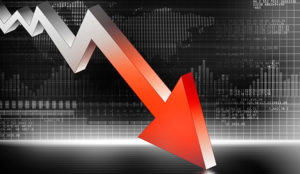While investors hold their breath waiting for Amazon to turn the profitability corner, the folks over at Buy.com seem to be holding their street map upside down, searching in vain for the profitability neighborhood.
Judging from their respective market capitalizations, the $10.5 billion (US$) Amazon and the $500 million Buy.com both deserve to be called “Internet giants,” but neither company is bringing in even gerbil-sized profits. In this case, size doesn’t seem to matter except in contemplating the potential devastation of a fall.
Stopping for Directions
Both companies offer a dizzying array of “everything for everyone” wares and services for sale on the Web. They have both been chasing customers and revenues with competitive pricing and customer service innovations. Both companies have been burdened with massive infrastructure and marketing costs, and they have both been caught in the whirlpool of downward spiraling dot-com stock prices.
While Amazon generally seems to inspire more confidence than its lesser-known competitor, Buy.com insists that it too is on the road to black ink. Is it possible that the rapidly consolidating world of e-commerce can support two Internet giants? Or is Buy.com the tortoise in a winner-take-all race for survival?
Less than Sparkling Results
Both Amazon and Buy.com reported falling sales and widening losses in the second quarter. Customer growth was slower than expected for both companies. Each had a positive spin to offer to investors, though. Amazon said it beat estimates by two cents per share, and repeat orders were up from 70 percent a year earlier. Book and video sales finally yielded profits.
But Amazon shares plunged in aftermarket trading once the results were released. The stock took a big hit when Lehman Brothers analyst Holly Becker cut her rating on the company, reportedly saying the shares were overpriced. News of the departure of President and Chief Operating Officer Joseph Galli Jr. also contributed to the decline.
Meanwhile, CEO Greg Hawkins said that despite Buy.com’s less than glowing results, the company is on track. He said Buy.com will begin focusing on its more profitable businesses and spend money to improve the experience of shopping at the online superstore.
“We believe these key objectives will lead us to greater efficiencies in our acquisition of new and repeat customers to drive the Buy.com business model towards a cash flow breakeven point during the first half of 2002,” Hawkins said.
Super Models?
With all the attention on quarter-by-quarter performances, some analysts seem to be overlooking the problem of whether either company has a viable business model — and that is likely to be the make it or break it issue for both Amazon and Buy.com.
“One e-commerce IPO that investors might want to be leery of is online superstore Buy.com,” wrote an E-Commerce Times financial reporter early this year. “Buy.com has a questionable business model. The company sells many items at or below cost and tries to make it up in volume by selling advertising. This manner of doing business is pretty dicey, even on the Internet.”
An Analyst for Every Pot
An April report from Forrester named Buy.com among a list of companies that would have to achieve astronomical sales growth to stay afloat in the face of mounting losses. The same report said that Amazon.com had ensured its future by spreading its reach into a wide range of consumer markets. “Among all the online retail pioneers, only Amazon can claim a balanced set of assets that guarantees its leadership,” the report said.
In early June, Goldman Sachs’ Anthony Noto echoed Forrester’s praise, calling Amazon one of the Internet’s “pioneers with proven business models,” and saying the company would not need to look to capital markets for funding. In the same report, Noto tagged Buy.com as one of the e-commerce companies most in danger of failing.
But Noto’s praise of Amazon was contradicted by Lehman Brothers analyst Ravi Suria, who wrote a few weeks later that the company’s recognizable brand name was not doing enough to stem a string of steady losses. “We believe that the combination of negative cash flow, poor working capital management and high debt load will put the company under extremely high risk,” Suria wrote.
While both Amazon and Buy.com are putting on their bravest faces, both companies are vulnerable to the same threats. What seems increasingly clear is that the race they are in is not a sprint to see who will reach profitability first, but rather an endurance marathon to determine who will be the last one standing on the e-commerce dance floor.











































Social Media
See all Social Media